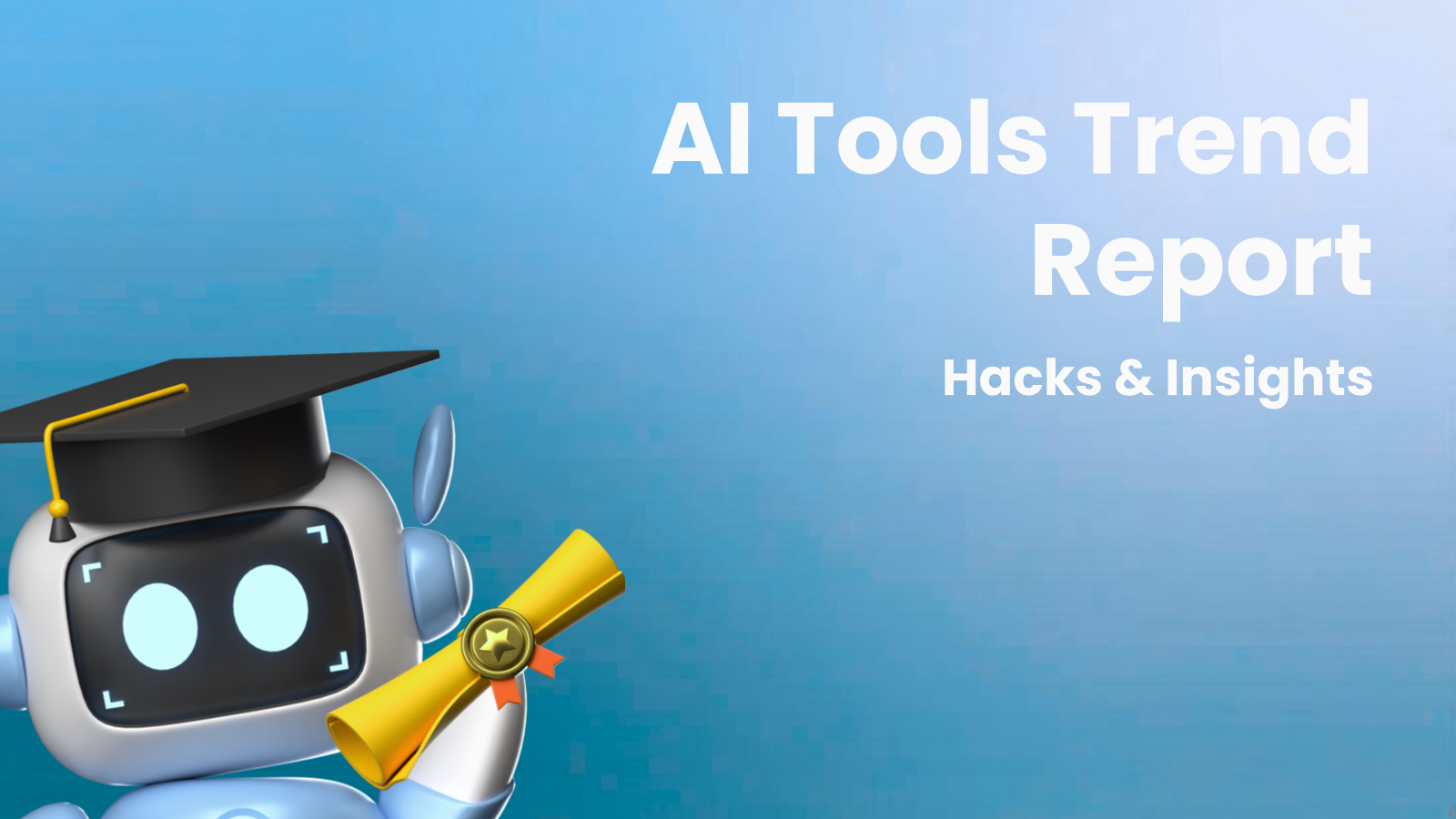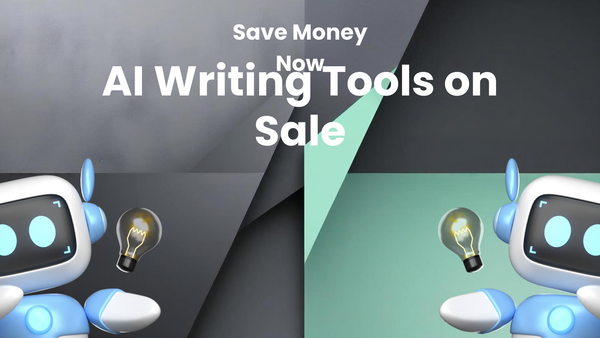The AI Tools Trend Report: Insider Hacks & Insights

Artificial intelligence (AI) is no longer a futuristic fantasy. It's here, it's now, and it's rapidly transforming everything from how we work to how we interact with the world. Are you keeping up, or are you letting this powerful technology pass you by? Many are overwhelmed, mistaking hype for substance, and missing out on practical AI tools that can deliver real results today.
This report cuts through the noise and provides a clear, actionable guide to the AI tools trend. We'll explore how these tools work, the challenges they present, and – most importantly – how you can leverage them for immediate gains. This isn't just another list of AI tools; it's an insider's look at how to use them effectively.
I. Understanding the AI Tools Landscape
What are AI Tools?
AI tools are software applications or platforms that leverage artificial intelligence technologies to perform specific tasks or solve particular problems. These tools use algorithms to learn from data, recognize patterns, and make decisions or predictions without explicit programming for every scenario.
For example, Grammarly uses AI to analyze text and provide suggestions for grammar, style, and tone. Another example is DALL-E 2, which creates images from textual descriptions. These tools matter because they can automate tasks, improve efficiency, and unlock new capabilities, impacting everything from marketing and customer service to product development and research.
A Brief History of AI
The concept of AI dates back to the mid-20th century. Alan Turing's work on computability and the "Turing Test" laid the groundwork. The Dartmouth Workshop in 1956 is considered the official birth of AI as a field. Early AI research focused on symbolic reasoning and problem-solving. However, progress was slow, leading to "AI winters" characterized by reduced funding and interest.
In the 1980s, expert systems – AI programs designed to mimic the decision-making abilities of human experts – gained popularity. However, they proved brittle and difficult to maintain. The resurgence of AI in recent years is largely due to advancements in machine learning, particularly deep learning, fueled by the availability of vast amounts of data and increased computing power.
Core Technologies Powering AI Tools
Several key technologies underpin the current generation of AI tools:
- Machine Learning (ML): Algorithms that allow computers to learn from data without being explicitly programmed. Common ML techniques include supervised learning (training on labeled data), unsupervised learning (finding patterns in unlabeled data), and reinforcement learning (learning through trial and error).
- Natural Language Processing (NLP): Enables computers to understand, interpret, and generate human language. NLP powers chatbots, language translation tools, and sentiment analysis software.
- Computer Vision: Allows computers to "see" and interpret images and videos. Applications include facial recognition, object detection, and image classification.
- Deep Learning: A subset of machine learning that uses artificial neural networks with multiple layers to analyze data. Deep learning is particularly effective for complex tasks such as image recognition and natural language understanding.
II. Diving Deep: How AI Tools Work and Common Challenges
The Mechanics of Machine Learning: A Simplified View
At its core, machine learning involves training a model on data. This model learns to identify patterns and relationships, which it can then use to make predictions or decisions on new, unseen data.
Imagine training a model to identify cats in images. You would feed the model thousands of images of cats, labeled as "cat." The model would analyze these images, identifying features such as pointy ears, whiskers, and a certain shape. After sufficient training, the model can then be presented with a new image and accurately predict whether it contains a cat.
Different ML algorithms are suited to different types of problems. For example, decision trees are useful for classification tasks, while regression models are used for predicting continuous values. The choice of algorithm, the quality of the data, and the amount of training all influence the performance of the AI tool.
The "Black Box" Problem and Explainable AI (XAI)
One of the biggest challenges with AI, particularly deep learning, is the "black box" problem. Deep learning models can be incredibly complex, making it difficult to understand why they make certain decisions. This lack of transparency can be problematic, especially in sensitive applications such as healthcare or finance.
Consider an AI system used to approve loan applications. If the system denies an application, it's important to understand the reasons why. Is it due to a low credit score, a high debt-to-income ratio, or some other factor? Without transparency, it's impossible to ensure that the system is fair and unbiased.
Explainable AI (XAI) is a growing field that aims to make AI models more transparent and understandable. XAI techniques can help identify the features that are most important for a model's decisions, providing insights into its reasoning process.
Data Bias and the Importance of Data Quality
AI models are only as good as the data they are trained on. If the training data is biased, the model will likely perpetuate those biases in its predictions.
For example, if a facial recognition system is trained primarily on images of white men, it may perform poorly on women and people of color. This is because the model has not been exposed to a representative sample of the population.
Ensuring data quality and diversity is crucial for developing fair and accurate AI tools. This involves carefully curating the data, identifying and mitigating biases, and continuously monitoring the model's performance on different subgroups.
The Overfitting Trap
Overfitting occurs when a model learns the training data too well, to the point that it performs poorly on new, unseen data. The model essentially memorizes the training data, including its noise and outliers, rather than learning the underlying patterns.
Imagine training a model to predict stock prices based on historical data. If the model is overfitted, it might perform exceptionally well on the historical data but fail miserably when predicting future prices.
To avoid overfitting, it's important to use techniques such as cross-validation, regularization, and early stopping. Cross-validation involves splitting the data into multiple subsets and training the model on different combinations of these subsets. Regularization adds a penalty to the model's complexity, discouraging it from overfitting. Early stopping involves monitoring the model's performance on a validation set and stopping the training process when the performance starts to degrade.
III. Diverse Perspectives: The Pros, Cons, and Debates Surrounding AI Tools
The Efficiency and Productivity Boost: A Compelling Argument
One of the strongest arguments for AI tools is their potential to increase efficiency and productivity. AI can automate repetitive tasks, freeing up human workers to focus on more creative and strategic activities.
Consider a customer service chatbot. A well-designed chatbot can handle a large volume of customer inquiries, providing instant answers to common questions. This reduces the workload on human agents, allowing them to focus on more complex issues that require human intervention.
Studies have shown that AI can significantly improve productivity in various industries. For example, a McKinsey report found that AI could potentially boost global GDP by 1.2% annually through increased productivity.
Job Displacement: A Valid Concern
One of the most frequently raised concerns about AI is its potential to displace human workers. As AI tools become more sophisticated, they can automate tasks that were previously performed by humans, leading to job losses in certain industries.
For example, self-driving trucks could potentially replace truck drivers, while AI-powered diagnostic tools could reduce the need for radiologists.
However, it's important to note that AI is also creating new jobs. The development, implementation, and maintenance of AI systems require skilled workers in areas such as data science, machine learning, and AI ethics. The net effect of AI on employment is still debated, but it's clear that it will require workers to adapt to new roles and acquire new skills.
Ethical Considerations: Bias, Privacy, and Responsibility
AI raises a number of ethical considerations, including bias, privacy, and responsibility. We've already discussed the issue of data bias and its impact on AI fairness.
Privacy is another major concern. AI systems often collect and analyze vast amounts of personal data, raising questions about how this data is used and protected. For example, facial recognition technology can be used to track individuals' movements, raising concerns about surveillance and potential misuse.
Responsibility is also a critical issue. Who is responsible when an AI system makes a mistake or causes harm? Is it the developer, the user, or the AI system itself? These are complex questions that require careful consideration and the development of appropriate legal and ethical frameworks.
The Hype vs. Reality Debate
The AI field is often subject to hype, with exaggerated claims about its capabilities and potential impact. It's important to distinguish between the hype and the reality.
While AI has made significant progress in recent years, it's still far from achieving human-level intelligence. Many AI systems are brittle and easily fooled, and they often lack the common sense reasoning abilities that humans take for granted.
It's crucial to have a realistic understanding of AI's limitations and potential risks. While AI can be a powerful tool, it's not a magic bullet that can solve all problems. It's important to approach AI with a critical and informed perspective, focusing on its practical applications and addressing its ethical implications.
IV. Practical Solutions: An Actionable Guide to Leveraging AI Tools
Identifying the Right AI Tools for Your Needs
The first step in leveraging AI tools is to identify your specific needs and goals. What problems are you trying to solve? What tasks are you trying to automate? What outcomes are you hoping to achieve?
Once you have a clear understanding of your needs, you can start researching different AI tools and evaluating their suitability. Consider factors such as cost, ease of use, integration with existing systems, and the vendor's reputation.
For example, if you're looking to improve customer service, you might consider implementing a chatbot or an AI-powered customer relationship management (CRM) system. If you're looking to automate marketing tasks, you might consider using AI-powered email marketing or social media management tools.
A Framework for Implementing AI Tools
Implementing AI tools effectively requires a structured approach. Here's a framework you can follow:
- Define the problem: Clearly articulate the problem you're trying to solve with AI.
- Gather data: Collect and prepare the data needed to train the AI model. Ensure the data is clean, accurate, and representative of the problem you're trying to solve.
- Choose an AI tool: Select the AI tool that best fits your needs and budget.
- Train the model: Train the AI model on the data you've gathered.
- Evaluate the model: Evaluate the model's performance on a separate test dataset. Adjust the model's parameters or try a different algorithm if necessary.
- Deploy the model: Deploy the model into production and monitor its performance.
- Iterate and improve: Continuously monitor the model's performance and retrain it with new data to improve its accuracy and effectiveness.
Avoiding Common Pitfalls
Implementing AI tools can be challenging, and there are several common pitfalls to avoid:
- Starting with the technology, not the problem: Don't choose an AI tool just because it's trendy or hyped. Start by clearly defining the problem you're trying to solve and then look for the AI tool that best fits your needs.
- Underestimating the importance of data: Data is the fuel that powers AI. Make sure you have enough high-quality data to train your AI model effectively.
- Ignoring ethical considerations: AI can have significant ethical implications. Consider the potential biases, privacy risks, and societal impacts of your AI system.
- Lack of user training: Train your users on how to use the AI tool effectively. Otherwise, they may not be able to realize its full potential.
- Treating AI as a "set it and forget it" solution: AI models need to be continuously monitored and retrained to maintain their accuracy and effectiveness.
Real-World Examples of Successful AI Tool Implementation
Numerous companies have successfully implemented AI tools to achieve significant business outcomes.
- Netflix: Uses AI to personalize recommendations for its viewers, increasing engagement and retention.
- Amazon: Uses AI to optimize its supply chain, personalize product recommendations, and power its Alexa voice assistant.
- Google: Uses AI to improve its search engine, translate languages, and develop self-driving cars.
- Salesforce: Uses AI to power its Einstein platform, which provides insights and recommendations to sales and marketing teams.
These examples demonstrate the wide range of applications for AI tools and their potential to transform businesses across various industries.
V. Conclusion
The AI tools trend is not a fleeting fad; it's a fundamental shift in how we interact with technology and solve problems. By understanding the underlying principles, recognizing the challenges, and adopting a structured approach to implementation, you can leverage AI tools to unlock new levels of efficiency, productivity, and innovation.
However, remember that AI is not a silver bullet. It's a tool that requires careful planning, execution, and continuous monitoring. Embrace the power of AI, but do so with a critical and informed perspective.
Now, take the first step: Identify one area in your work or life where AI could potentially make a difference. Research a few relevant AI tools and start experimenting. The future is here, and it's powered by AI.




